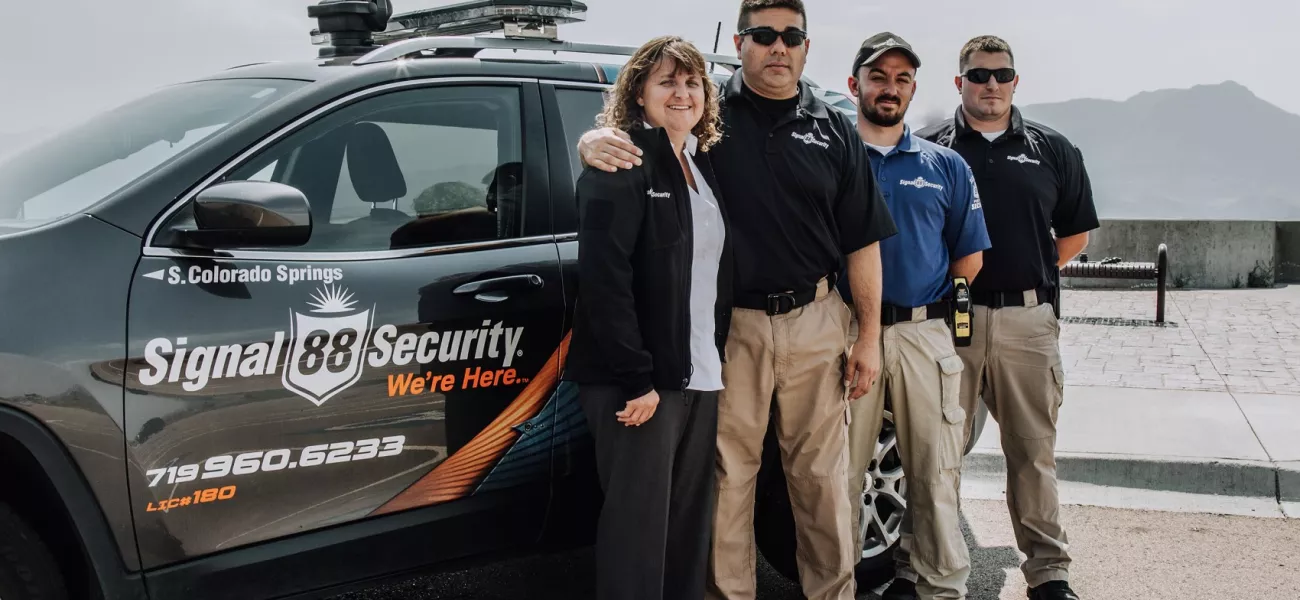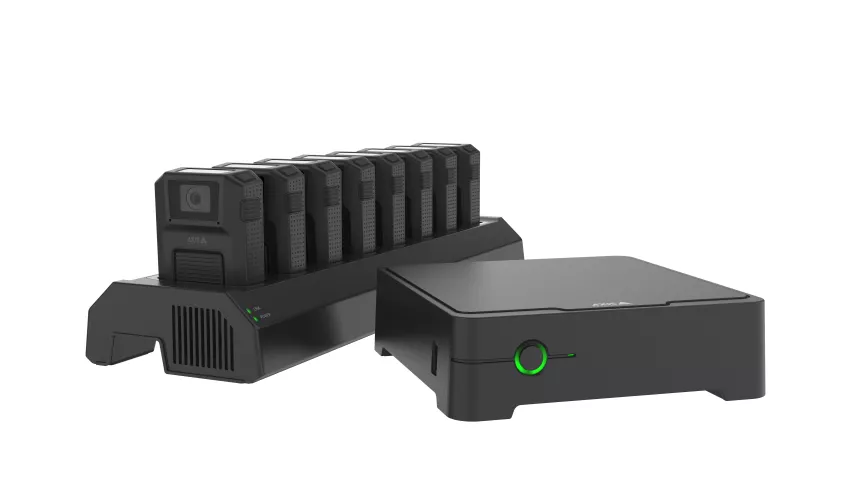
Signal 88 Security compares its legacy equipment to Axis body worn camera system
Body worn cameras, once the sole province of law enforcement, are becoming standard issue for many private security firms across the country. Often, their mere presence serves as a deterrent for bad behavior. And when it doesn’t, their video provides valuable forensic evidence for investigations.
While there’s a lot of similarity in the way they’re being used, what many private security firms are discovering is that there’s a huge difference in the way they perform.
One company’s search for a better solution

Signal 88 Security of South Colorado Springs, a private security company franchise, witnessed that profound disparity in body camera performance for themselves when they began field testing the Axis body worn camera system. Surveillance Secure Colorado, a surveillance system integrator and Axis partner, had recommended that co-owners Rebecca and John Resendes pilot the Axis solution to determine its potential as a replacement for their existing body cameras. Some of the distinctions they noted right from the outset include:
- Higher quality video and audio
- More rugged mounting clips
- Longer battery life
- Far easier operation
One of the biggest problems Signal 88 faces with its legacy body cameras is their poor night vision. “If a patrol officer walks up to a poorly lit apartment complex, our current cameras can’t even register the apartment number, let alone someone’s face. The image is just black,” says John Resendes, co-owner and operations manager for Signal 88’s surveillance security systems. “But with the Axis body worn camera, even if the area is dark, you get a clear image of faces and the surrounding area. The camera automatically adjusts to the existing lighting conditions.”
Muddled audio is another problem with their legacy cameras. “When you listen to the audio on our old cameras, there’s always a lot of static,” shares Resendes. “With the Axis body camera the sound is crystal clear. The built-in dual microphones are so sensitive they even catch people talking in the background.”
“When you view the video, you feel like you’re right there with the officer,” chimes in Rebecca Resendes. “You can hear everything.”
No more flimsy mounting clipsThe mounting clips on Signal 88’s current body cameras have been another issue. “The mounting clips aren’t very sturdy,” says Rebecca Resendes. “A lot of clips get broken and have to be replaced. It’s the kind of cost that really starts to mount up. In contrast, the Axis body camera uses a very heavy-duty Klick Fast mounting system that is less subject to breaking.”
Battery lasts through multiple shiftsWhen comparing how often the cameras need recharging, John Resendes notes that the charge on an Axis body camera lasts a lot longer. “With our current body cameras, we have to dock and recharge the cameras after every eight-hour shift,” says Resendes. “The battery on an Axis body camera, on the other hand, can run up to 17 hours depending on what resolution [1080p or 720p] I set. So I could go for a couple of days before having to dock and recharge the camera.”
So simple to record, download, store, and retrieve video
“There's no manual intervention on my part at all. At the end of the shift the officer puts the camera in an Axis docking station where the video is immediately offloaded to my PC. And while the video is offloading, the camera is automatically recharging," says Resendes.
Resendes points to a number of disparities in operation between his legacy body cameras and the one from Axis. “With our existing cameras, an officer has to hold down the record button for five or six seconds before it engages,” reports Resendes. “Sometimes they forget that they need to hold it that long, and they start talking and it's not even activated. With the Axis body camera it’s just a quick tap.”
“Another issue we have with the pressure push buttons on our legacy cameras is that they sometimes get stuck,” shares Rebecca Resendes. “And once that happens it’s hard to keep them working. I don’t see that happening with the Axis body cameras.”
Ease of operation is another distinct difference between the body cameras. “Our current body cameras store the video on SD cards,” explains John Resendes. “So at the end of the shift, I have to take out the SD card, insert the card in the computer, and manually download the video.”
With the Axis body camera system, the whole process is automated. “It’s a lot easier and faster,” states Resendes. “Plus, there’s no manual intervention on my part at all. At the end of the shift the officer puts the camera in an Axis docking station where the video is immediately offloaded to my PC. And while the video is offloading, the camera is automatically recharging.”
To protect the integrity of the video, the Axis body camera system maintains video encryption from the moment the video is captured, through transfer to the docking and into archiving on the local storage server.
Extra safety feature to protect patrol officersAnother feature that the Resendes feel will be important to their officers is the ability of the Axis cameras to automatically activate if the officer falls or unholsters their weapon. “Depending on the contract, most officers only carry a taser for self-defense,” explains John Resendes. “In the rare instance they might have to draw it out, or if an assailant knocks them to the ground, it’s good to know that the camera will instantly start recording.”
Axis body worn cameras come out on top
“Body cameras are such essential tools for our profession,” says Rebecca Resendes. “Oftentimes they deter people from behaving badly because they know if the camera sees them commit a felony or assault, we’re going to hand that recording over to the police and they’re going to be apprehended.”
“Having high-quality visual and audio evidence like we would get from Axis body cameras protects our company in other ways, too,” states John Resendes. “Especially when it comes to dealing with false claims against our officers. If someone accuses one of our officers of harassment or racial slurs, we can just pull up the video and prove they didn’t do it.”
It’s early days yet in the evaluation process, but so far, Resendes acknowledges that the Axis body worn camera system delivers a far better value proposition than their legacy system. Given what Signal 88 Security has experienced so far, he anticipates that over the next few years the company will be gradually replacing their aging legacy cameras with superior performing Axis technology.
